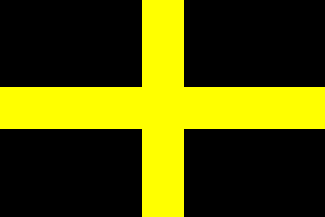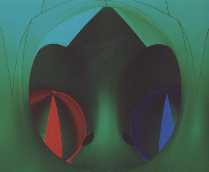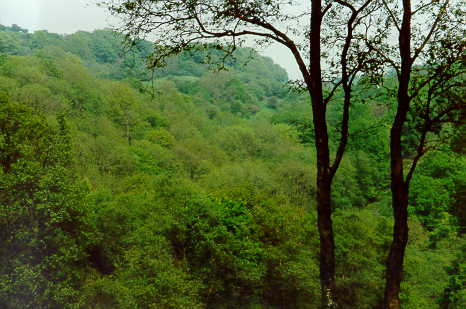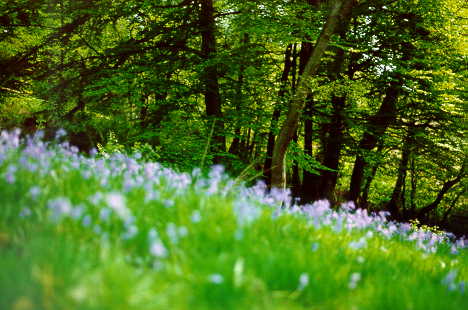
Y Ddraig Goch
(The Red Dragon)
Wales had been ruled with England since it's annexation in the 13th century and consequently it's flag did not feature in the Union Jack. However, the Red Dragon of Cadwaladr ap Gruffudd, Prince of Gwynedd (d.1172), was recognised as Wales' official flag in 1959. This symbol was brought to Wales by a Roman legion, which adopted it during it's campaigns with Alexander, a flying crocodile perhaps being an apt symbol for a front-line unit. The white and green field represents the colours of Llywelyn ap Gruffudd (d.1282) who assumed the title of Prince of Wales.
The legend of St George (Khidr or Green Sufi in other cultures, martyred reign of Diocletian 284-305 AD?) slaying a dragon appears to have arisen from a Byzantine depiction of a knightly St George on horseback spearing the pagan sacred Nile crocodile Petesuchos or 'He who belongs to Suchos (Sebek)'. In 1348 Edward III made St George the patron of the Knights of the Garter, and it was around this time that George seems to have replaced Edward the Confessor as England's national saint. The annexation, or slaying, of a dragon may then have had resonance with English sensibilities.
Some note that Welsh battle standards, by sporting a red dragon, differed to the white adopted by the Saxons.

The Cross of St David, arguably the oldest extant British flag. Note similarity in layout to Cross of St George, which probably copied the design.

Cariad - Cardiff City Farm
Angel Gabriel to God;'What's with these Welsh then, God? You
give them beautiful mountains and scenery, waterfalls, rivers and
salmon, endless forests and rolling fields, plentiful sheep for wool,
the longbow, not to mention huge reserves of coal, iron ore, slate
and water. You've even given them gold!'
'Ah', said God,
'you haven't seen who I've given them as neighbours'.

or "The church of St. Mary in a hollow of white hazel near a
rapid whirlpool and near St. Tysilio's church by the red cave".
(click here to hear it pronounced).

Media: S4C | vibe 101 | Red Dragon Radio | BBC Wales | HTV Wales
Government: National Assembly of Wales | Cardiff County Council
local elections

Helen for Welsh president!



1820, 1840, 1869, 1966 and 1969.

My father, James Patrick Kemble (Jim or Bull to his friends), was one of three men, from a funeral home in Cardiff, who went to Aberfan as soon as news of the disaster broke in order to help with the burial arrangements. I suppose he thought that his experiences in World War II had prepared him adequately for what he was about to meet. It soon became apparent how great was the loss of life (the country ran out of suitable coffins) and he was there for two weeks. On the 29th December, 1966, four days after my tenth Christmas and despite being a devout Catholic, he took his own life. He was 45 years of age. My family was not alone in what it suffered as a consequence of the disaster. Perhaps, a memorial could be considered for those who, willing to give of themselves, ultimately find the price to be too high.
